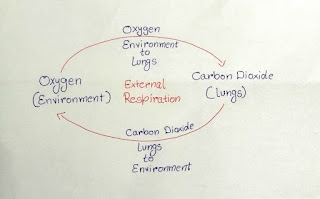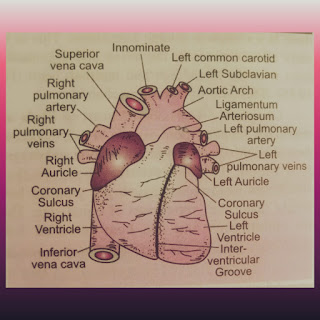WHAT IS RESPIRATION? Its TYPES and FUNCTIONS?
Respiration is the intracellular biological process occur in all organisms. It involving the exchange of environmental oxygen with carbon dioxide that produced inside the cell during oxidation of food. Organism take the oxygen from environment. Carbon dioxide release during oxidation and eliminate to the environment. While oxidation of food, small amount of energy release and this energy stored in the form of ATP. This ATP hydrolyze into ADP when body required energy. The surface at which gases exchange known as respiratory surface.
Types of respiration- Respiration are two types Aerobic respiration and Anaerobic respiration
1) Aerobic Respiration- means with oxygen. It is the process in which the molecular oxygen utilize and carbon dioxide release simultaneously. It yields inorganic end product but provide much more energy. It is found in animal and plants. Aerobic respiration is divide into two types- Direct Aerobic Respiration and Indirect Aerobic respiration.
a) Direct Aerobic Respiration- is the direct exchange of environmental oxygen with carbon dioxide without involving special respiratory organs. It occur without the aid of blood. Example- Flatworm, Roundworm, Plants and protists.
b) Indirect Aerobic Respiration- is the exchange of environment oxygen and carbon dioxide with involving special respiratory organ. This type of respiration also need flow of blood. Example- Fish, Human.
Special respiratory organ require for indirect respiratory-
i) Cutaneous respiratory- The exchange of oxygen and carbon dioxide through the vascular skin is called cutaneous respiratory. This type of respiration take place in annelids and amphibians. It occur in water as well as on land. Example- earthworm.
ii) Buccopharyngeal respiration- The exchange of oxygen and carbon dioxide through the thin, vascular lining of the buccopharyngeal cavity called buccopharyngeal respiration. This type of respiration take place in certain amphibians like frogs and toads. It occur in air.
iii) Branchial Respiration- The exchange of oxygen and carbon dioxide through gills is known as branchial respiration. It found in many annelids, all fishes and some amphibians. It occur in water only.
iv) Pulmonary respiration- The exchange of oxygen and carbon dioxide through lungs known as pulmonary respiration. It found in mammals, reptiles, birds and some amphibians. Oxygen enter inside the blood through lungs and carbon dioxide enter inside the lungs through blood. It involves internal respiration and external respiration.
Internal Respiration- The respiratory gases exchange between the cell and blood. Carbon dioxide released from the cells and enter to the blood, it makes deoxygenated blood. Oxygen released from the blood and enter to the cell. It is a chemical process.
External Respiration- In this the respiratory gases exchange between the lungs and environment. The carbon dioxide released to the environment from the lungs and Oxygen enter into the lungs from environment. It is a mechanical process.
2) Anaerobic Respiration- means without oxygen. It is the process in which the energy released without utilizing oxygen. During respiration oxygen is not utilized and the carbon dioxide may or may not be produced. It yields organic end product but provide less energy. It found in Yeast, some Bacteria, Ascaris and tapeworm.
Yeast oxidize the glucose to ethanol and carbon dioxide without utilizing oxygen. This is called alcoholic fermentation.
Some Bacteria and parasites metabolize glucose into lactic acid without utilizing oxygen and without forming carbon dioxide. It is called lactic acid fermentation.
Functions of Respiration-
1) It provide the energy by utilizing the oxygen in aerobic respiration.
2) It maintain the acid-base balance by adjusting the amount of carbon dioxide.
3) It excretes carbon dioxide and some other volatile substances like ammonia, alcohol, ketone bodies.
4) It detoxified the harmful material.
Some Important Questions
Q1) Name the two example of annelids?
Ans. Earthworm and Liches are the example of annelids.
Q2) Name the two example of Amphibians?
Ans. Frog and Toads are the example of amphibians.
.jpeg)
.jpeg)







Comments
Post a Comment